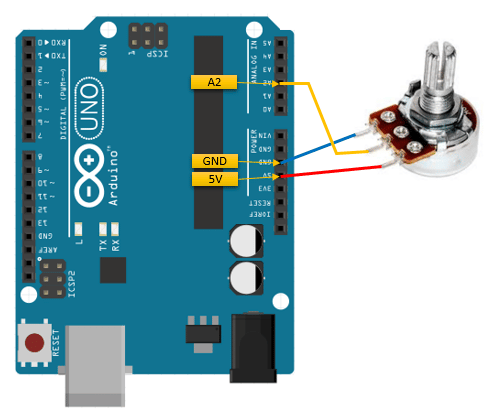

It’s used by us to read the information from an device connected to arduino. We used the analogwrite function to create a PWM signal on the arduino nano every.
#Arduino analogwrite ground plus
The Arduino Due supports analogWrite() on pins 2 through 13, plus pins DAC0 and DAC1. Older Arduino boards with an ATmega8 only support analogWrite() on pins 9, 10, and 11. On the Arduino Mega, it works on pins 2 through 13. It actually tells the user about the values which the sensors get. On most Arduino boards (those with the ATmega168 or ATmega328), this function works on pins 3, 5, 6, 9, 10, and 11. In simple it’s like our brain asking our hands take back when we touch fire.ĪnalogRead(): This has nothing to do with the user, it’s all about the arduino itself, when we connect some analog devices such as sensors, the information which the sensor senses must be sent to the user, so this is done by the analogRead() command. Similar to digitalWrite, analogWrite can output any voltage between 0 and 3.3 volts as needed.ĭigital write(): is a command given from an user to the arduino board, for example when you connect an led to arduino, you can write(command or some sort of order) whether you really want the led to turn on or off, it’s actually like a pet, the arduino just receives the message from us which we put inside this command and it does what ever we just say It switches the required pin on or off by setting it to the maximum voltage (3.3 V) or 0 volt. The Arduino provides PWM (Pulse Width Modulation) that can output HIGH and LOW at different rates to adjust the LED brightness. But if you are using Motors/anything that uses coils then having knowledge about PWM would be necessary and you shall also know about the effect of sudden current changes in inductors, but don’t worry about this too much if you are controlling small LEDs and buzzers and all that.

Check this video out to learn more.īut if you are a beginner you don’t have to worry about it too much. Now internally the way analog write works is by using Pulse Width Modulation(PWM). X= 93(Approx, remember it should be a whole number between 0 and 255) So if I want 1.2V, let no of steps required be x Let’s say I want approximately 1.2V on a pin. speedControl() This function uses the analogWrite() function to generate a PWM signal that accelerates both motors from zero to maximum speed before. See the following example to better understand. It provides 256 different voltage levels including 0V. Simply put, it sets the desired pin to maximum voltage(3.3 V) or 0 volt, in other words, turns it on or off.ĪnalogWrite is similar to digitalWrite, but it can provide desired any voltage between 0V to 3.3V. To set the values of Arduino pins 8 and 9, we will use the digitalWrite() function, and to set the value of pin 2, we will use the using analogWrite() function.


 0 kommentar(er)
0 kommentar(er)
